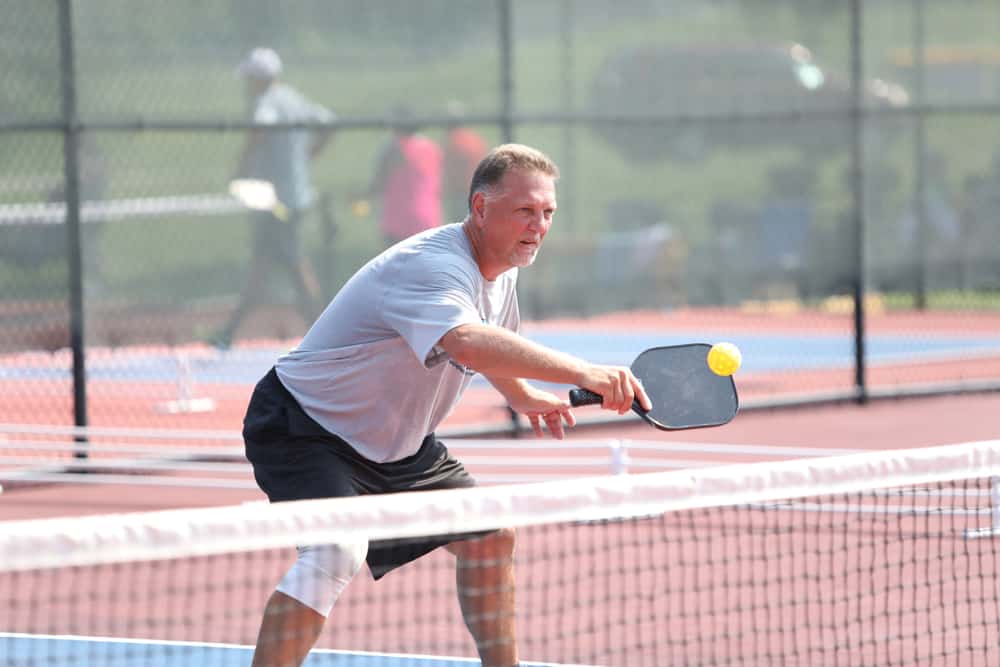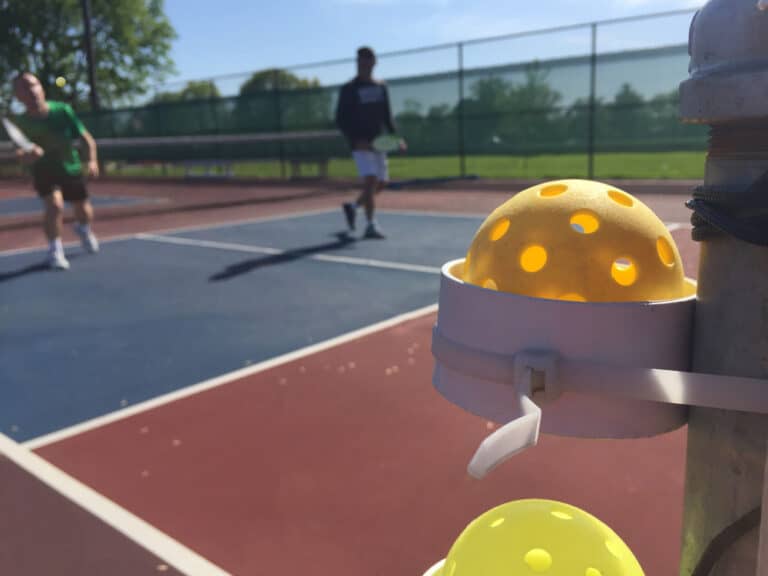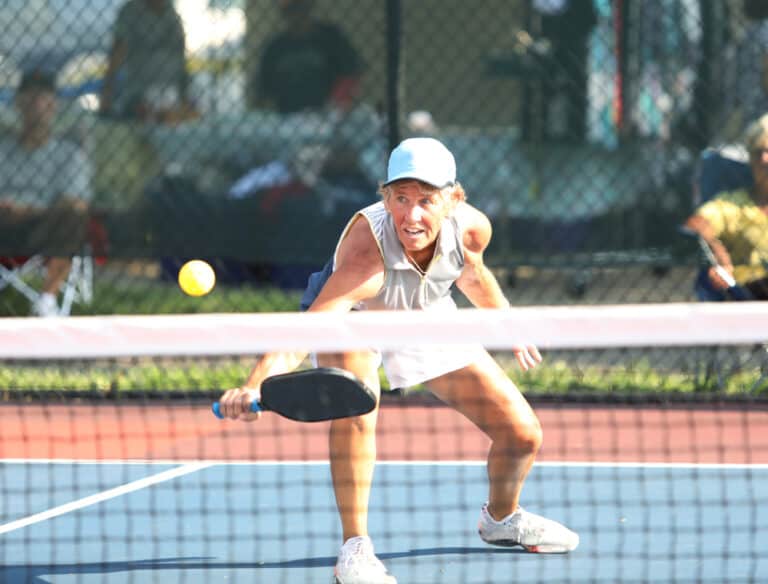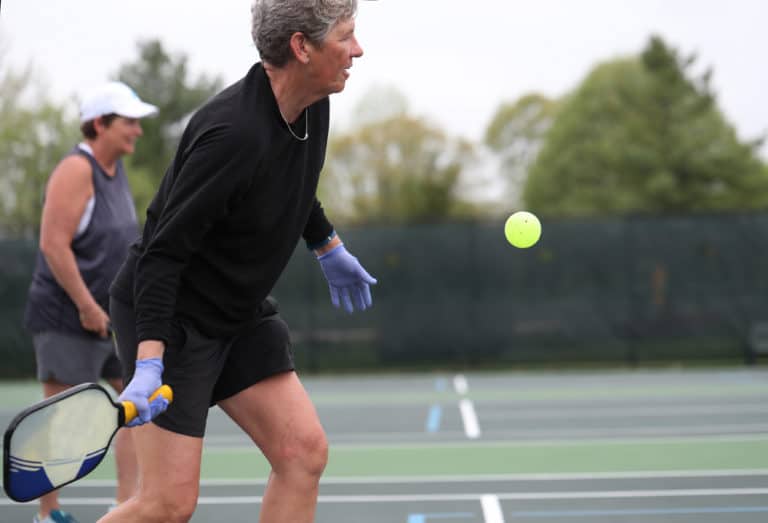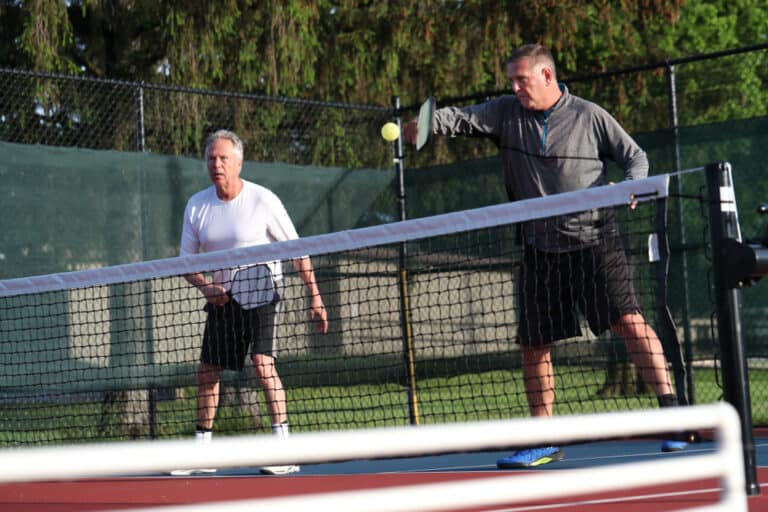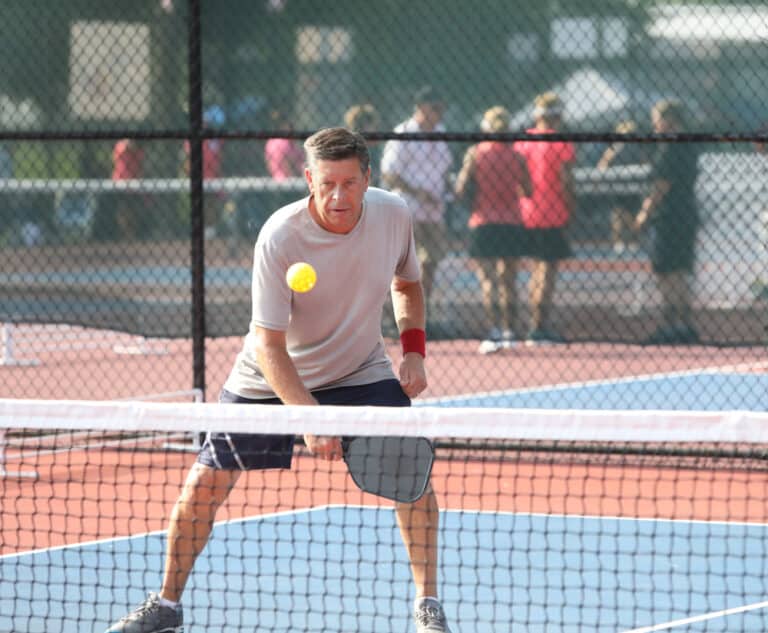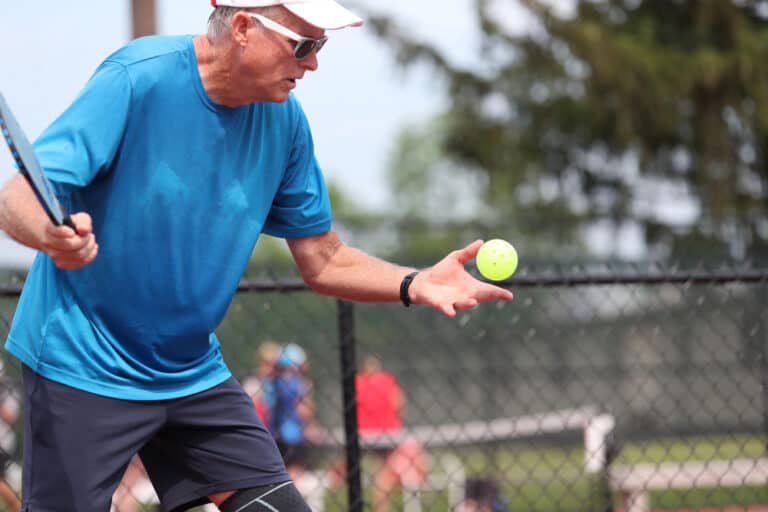Can You Jump In Pickleball?
In pickleball, you have to have some of the following attributes: excellent body movement, fast reflexes, and great hand-eye coordination. If we add jumping to this list, we are potentially looking at a great pickleball player in the making. Let’s discuss when you can jump in pickleball.
You can jump in pickleball. When playing an overhead smash or an Erne, you must jump to maximize the shot’s potential. The most important thing to get spot-on with any jump shot in pickleball is not to touch the non-volley area after completing the shot, as this will be considered a fault.
Adding jumping to your pickleball game could add another level of attacking options to your arsenal. Being a mixture of existing racquet sports, pickleball as a sport has a place for the jumper in its game. The timing of a jumping shot is crucial to register the most damage.
Can You Jump In Pickleball
Pickle ballers can jump! If you have some spring left in your suspension, use it around the pickleball court, and surprise your opponents with a well-timed jump. Jumping and playing a shot simultaneously is hard to do, and you might need to practice them a bit.
Here are examples of where a little jump will make all the difference when playing a pickleball match.
Jumping Overhead Smash
The overhead smash is a highly-effective shot in pickleball, and when executed right, it can win you many points. You can play this shot from a stationary position, moving backward and turning your body through the shot, or my favorite way – jumping to smash the ball in mid-air!
When performing any overhead smash, you have to make sure that when your body comes to a stop, no part of you touches the kitchen – as then you will lose the point no matter how smashing your shot.
Jumping-Across-The-Kitchen Erne
Another super-attacking shot in pickleball is the Erne, named after Erne Perry, who dominated rallies with this shot during the 2010 USAPA National Pickleball Tournament held in Arizona. After witnessing Erne’s domination, a videographer, Jeff Shank, coined the phrase.
There are three types of legal Erne shots that you can choose to perform during a match:
- The Around-The-Kitchen Erne: Here, you will move around the kitchen (No Volley Zone), where you move outside the court lines, and establish your feet before playing a volley, dink, or smash.
- The Trough-The-Court Erne: With this shot, you will make your way through the kitchen zone, establish your feet outside the No Volley Zone, and play your shot.
- The Jumping-Across-The-Kitchen Erne: Playing this Erne involves a jumping move from outside of the kitchen playing area, flying through the air, and playing the ball mid-air before landing outside the kitchen with no part of yourself touching the No Volley Zone.
A very important note on playing any Erne shot is that you can’t hit the ball before it passes the net’s plane – the ball has to be played above your side of the court. Your racquet may pass over the net after playing the ball on your side. As long as contact was made on your side, it will not be considered a fault.
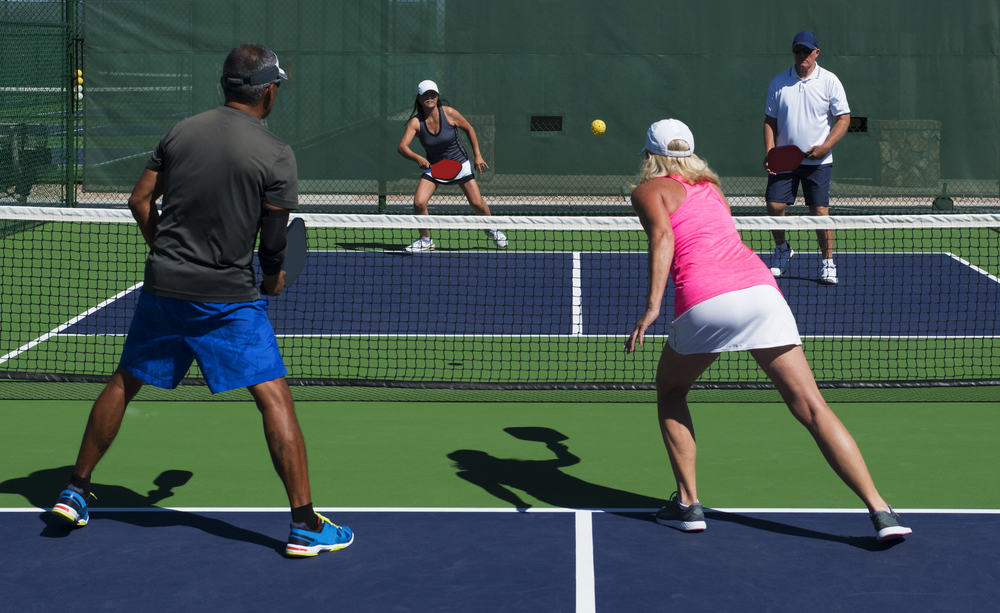
Jumping In General Play
Generally, most pickleball players have a little natural jump in their game without knowing about it. Typically, when you are readying yourself for a shot, a natural small jump occurs to ready your body and feet to return a ball.
Some players prefer to jump and volley when the opportunity presents itself, a high floating ball can draw this action out, and some refer to it as a smashing volley (not an overhead smash). Even when it’s a small one, jumping helps to transfer weight and can add momentum to your shot.
According to Section 9.A-9.C. of the USA Pickleball Rulebook, when it comes to hitting a volley, it must be initiated outside of the non-volley zone:
- “9.A. All volleys must be initiated outside of the non-volley zone.”
- “9.B.1. The act of volleying the ball includes the swing, the follow-through, and the momentum from the action.”
- “9.B.2. If the paddle touches the non-volley zone during the volley motion, before or after contacting the ball, it is a fault.”
- “9.C. During the act of volleying, it is a fault if the volleying player’s momentum causes the player to contact anything that is touching the non-volley zone, including the player’s partner.”
- “9.C.1. It is a fault even if the ball becomes dead before the player contacts the non-valley zone.”
- “9.D. If a player has touched the non-volley zone for any reason, that player cannot volley a return until both feet have made contact with the playing surface completely outside the non-volley zone. A maneuver such as standing within the non-volley zone, jumping up to hit a volley, and then landing outside the non-volley zone is a fault.”
The official rules about volleying close to the kitchen – non-volley zone – are quite simple. If you jump and hit a volley, your momentum should be under control before reaching the non-volley zone. If your jumping momentum makes you touch any part of the kitchen area, a fault will be called, whether your volley was a scrumptious winner.
It will still be a fault if you touched the non-volley zone before jumping, playing a volley or overhead smash, and landing outside the kitchen line after playing the shot. When making contact with the non-volley zone, your feet should first contact the surface outside of the kitchen before jumping and playing a shot.
Be sure not to let your paddle touch the kitchen area after performing a jumping or stationary shot, as this action will result in an immediate fault. When jumping and playing a shot, the landing part after the shot is crucial, as all your dazzling work can be undone by innocently touching the kitchen.
In pickleball, you can jump as much as you like, and where some prefer to be stationary with certain shots, it’s your prerogative to find your style, which ultimately will help you become the best pickleball player that you can be. If that includes jumping – I say go ahead and jump!
Imagine if tennis disallowed jumping. We would never have had the absolute pleasure of seeing Pete Sampras “flying” through the air before smashing the ball in the act of pure authority.
Conclusion
If you can incorporate jumping into your pickleball game, go for it, it brings a fun element to the sport. Remember, it should add to your game, not distract from it. A well-timed jumping-across-the-kitchen Erne is a thing of attacking beauty, and long may it continue!
References
- https://usapickleball.org/docs/ifp/USA-Pickleball-Rulebook.pdf
- Pickleball, Inc – The Original Pickle-Ball Company
- https://thepickler.com/blogs/pickleball-blog/pickleball-rules-to-know-jumping-in-the-kitchen#:~:text=This%20means%20that%20if%20you,surface%20before%20hitting%20your%20volley
- https://pickleballkitchen.com/pickleball-rules-faq-24-common-pickleball-rules-questions-answered/

